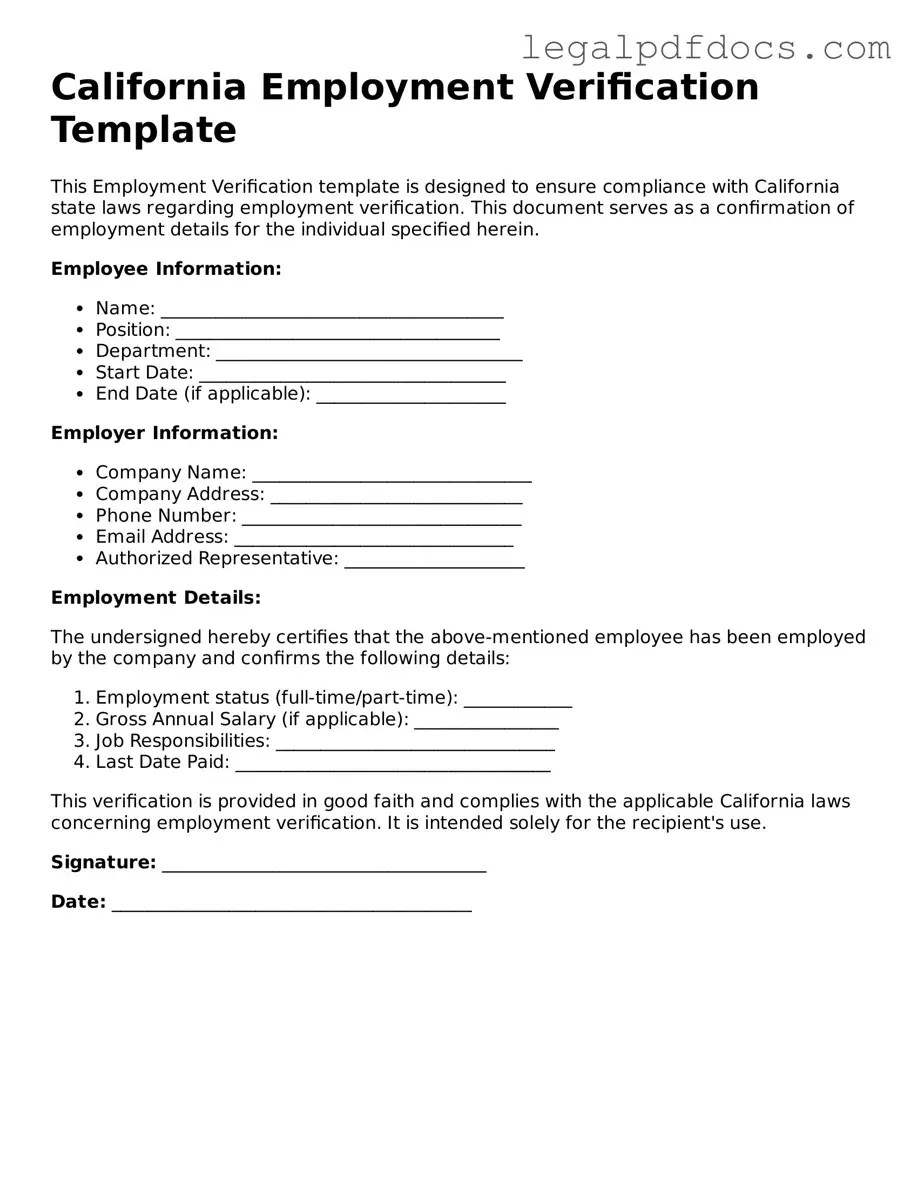Official Employment Verification Form for California
The California Employment Verification form is a document used to confirm an individual's employment status and details. It serves as an important tool for both employers and employees, ensuring that accurate information is shared during various processes, such as applying for loans or benefits. To get started, please fill out the form by clicking the button below.
Open Employment Verification Editor Here
